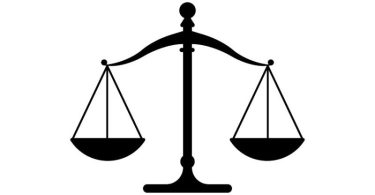The main difference between a law and an executive order is that a law is a formal rule or regulation passed by a legislative body and signed into law by a government official. On the other hand, an executive order is a directive from the head of the executive branch of government.
Both laws and executive orders have the force of law. Laws are made through a formal process, and they apply to everyone in the area of the legislative body that made them. On the other hand, executive orders are usually made by the President or other officials in the executive branch and only affect that part of the government. Still, laws are generally more permanent and hard to change than executive orders, which can be easily revoked or altered by other executive orders.
What is a Law?
A law is a formal rule or regulation by a governing body, like a legislature or a court of law. Laws are meant to control how people act and give people a way to keep things in order and settle disagreements.
Laws can be made in many different ways, depending on who is in charge and what kind of law is being made. For example, laws can be made by a legislative body, like a national or state legislature, or by a court of law.
Laws can be about many things, such as crimes, civil disputes, contract obligations, property rights, and public safety. Government employees like police officers or court clerks usually enforce laws. If you don’t follow the law, you may have to pay a fine or face other legal consequences. Laws and how they are made and enforced are essential to modern societies. They help ensure that people and organisations act in a legal and responsible way.
What is an Executive Order?
An executive order is a lawful order from the head of the government’s executive branch. Executive orders are used to manage and direct the work of the executive branch and to put policies and programmes into place.
In the United States, executive orders are usually given by the President or by the governor of a state. They are used to get around the formal legislative process and are often used when the President or governor can’t get the support of the legislative branch for a policy or initiative.
Executive orders are usually made with a specific goal or purpose in mind, and they may be challenged in court or looked at by the legislature. They can be used to deal with a wide range of problems, from foreign policy to domestic issues. They can also be used to tell government agencies what to do or set up new rules or policies. Overall, executive orders are a big part of how the executive branch of government works and can significantly affect how government policy goes.
Difference Between Law and Executive Order
The primary distinction between a law and an executive order is that the head of the executive branch issues the latter rather than through the formal legislative process. Laws are made by legislative bodies like the United States Congress. They are meant to control how people act and keep society running smoothly. Most of the time, laws are more stable and hard to change than executive orders.
On the other hand, executive orders have the force of law that the President or other executive officials give. Most of the time, executive orders are used to manage and direct the work of the executive branch of government. They can also be used to put policies and programmes into place or deal with specific problems or issues. Executive orders can significantly affect how the government runs, but they are usually less permanent and easier to change or get rid of than laws.
The way they are made is another big difference between laws and executive orders. Laws are made through a formal process that includes debate, negotiation, and voting. On the other hand, executive orders are made by the executive branch without needing approval from the legislature. This means that laws usually have more support from the public and are looked at and changed by the public more than executive orders.






